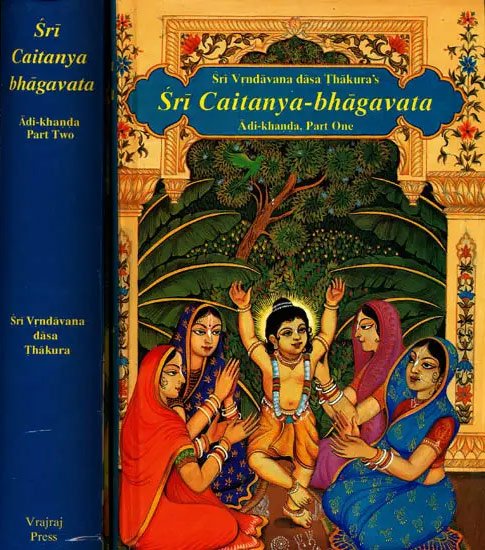Chaitanya Bhagavata
by Bhumipati Dāsa | 2008 | 1,349,850 words
The Chaitanya Bhagavata 1.16.29, English translation, including a commentary (Gaudiya-bhasya). This text is similair to the Caitanya-caritamrita and narrates the pastimes of Lord Caitanya, proclaimed to be the direct incarnation of Krishna (as Bhagavan) This is verse 29 of Adi-khanda chapter 16—“The Glories of Shri Haridasa Thakura”.
Verse 1.16.29
Bengali text, Devanagari and Unicode transliteration of verse 1.16.29:
অশ্রুপাত, রোমহর্ষ, হাস্য, মূর্চ্ছা, ঘর্ম কৃষ্ণ-ভক্তি-বিকারের যত আছে মর্ম ॥ ২৯ ॥
अश्रुपात, रोमहर्ष, हास्य, मूर्च्छा, घर्म कृष्ण-भक्ति-विकारेर यत आछे मर्म ॥ २९ ॥
aśrupāta, romaharṣa, hāsya, mūrcchā, gharma kṛṣṇa-bhakti-vikārera yata āche marma || 29 ||
asrupata, romaharsa, hasya, murccha, gharma krsna-bhakti-vikarera yata ache marma (29)
English translation:
(29) He manifested all the different ecstatic symptoms like crying, hairs standing on end, laughing, losing consciousness, and perspiring.
Commentary: Gauḍīya-bhāṣya by Śrīla Bhaktisiddhānta Sarasvatī Ṭhākura:
The phrase kṛṣṇa-bhakti-vikāra indicates the following eight transformations of ecstatic love: stambha (being stunned), sveda (perspiring), romāñca (hairs standing on end), svara-bheda (choking), vepathu, or kampa (trembling), vaivarṇya (fading of color), aśru (weeping), and pralaya, or mūrchā (devastation).
